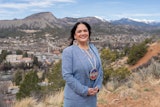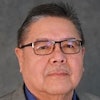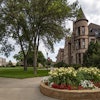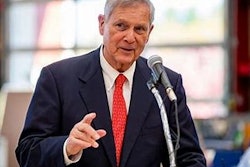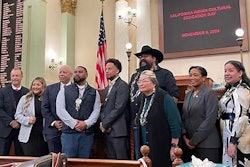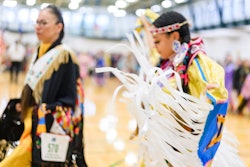Survey Confirms Tribal College Role in Alleviating Unemployment
WASHINGTON — A new national survey reveals that tribal college graduates do very well in the workplace, offering new hope that higher education can be a big boost to one of the nation’s poorest and most undereducated minority groups.
The study, Creating Role Models for Change: A Survey of Tribal College Graduates, reveals that 91 percent of students who graduated from the nation’s 33 tribal-run colleges and universities in 1998 either have secured a job or have decided to further their higher education.
That contrasts sharply with American Indians’ unemployment rate, which reached 50 percent in 1997 for all American Indians on reservations and 55 percent for those on reservations with a tribal college, according to the U.S. Bureau of Indian Affairs.
“These findings confirm the central role that these colleges play in American Indian higher education,” says Dr. David Gipp, president of the American Indian Higher Education Consortium and president of United Tribes Technical College in Bismark, N.D.
The survey’s results demonstrate “the unique nature of tribal colleges in integrating tribal values along with academic and technical excellence, which allows students to achieve success despite starting out in the most impoverished regions in the nation,” he says.
The study — conducted by the Institute for Higher Education Policy, the American Indian Higher Education Consortium and the Sallie Mae Education Institute — also helps paint a better picture of those who benefit from a tribal college education.
It found that 74 percent of tribal college graduates were women and that 55 percent were unmarried, 34 years old and usually the first in their families to attend college. It also showed that 72 percent of those unmarried female students have children.
In what the study’s sponsors hailed as a good sign for impoverished reservation communities, the survey reveals that more than one-fourth of tribal college graduates secured employment in fields critical to American Indians on reservations.
For instance, 13 percent of the graduates said they had taken a job teaching at an elementary or secondary school. Another 16 percent landed jobs as nurses or in health-care professions. Many reservations face severe shortages of teachers and health-care workers.
The survey found that another 19 percent of tribal college graduates took jobs in business or accounting, 13 percent in computer and office technology and 11 percent in psychology, social work or human services.
The median salary for those tribal college graduates, the study found, was $12,500 for those who earned a certificate, $15,115 for those with an associate’s degree and $20,020 for those with a bachelor’s degree. More than one-fourth of those employed full-time reported they earned $25,000 a year or more.
“These findings strongly suggest that the education students receive has had a positive effect on their lives,” the study concludes. “Although further research is necessary… tribal college graduates seem to be employed at higher rates than might have been expected had they not achieved their degrees or certificates.”
The survey’s findings “have positive implications for tribal colleges, their students and the communities they serve,” the report says. “Given the graduates’ tendency to remain nearby, the employment and continuing education patterns of tribal college alumni are hopeful signs for struggling communities.”
American Indians have the poorest educational record of any ethnic minority in the country. U.S. Department of Education statistics show that in 1990 only 66 percent of American Indians finished high school and a mere 9 percent graduated from college.
“The history of higher education for American Indians in the United States largely has been one of systemic failure,” the report says. “For hundreds of years, the primary goal of postsecondary education efforts for American Indians at predominately White, mainstream institutions was cultural assimilation rather than students’ educational development and progress.
“This history leaves a legacy that reaches up to the turn of the millennium,” the report says. “Even if they manage to enroll in higher education, American Indians — especially residents of isolated reservations — continue to face many barriers to participation and persistence, including inadequate academic preparation, financial difficulties, lack of role models, unfamiliar institutional environments and the distance from family.”
Most tribal colleges are two-year institutions. U.S. Department of Education records show that 65 percent of the degrees the colleges awarded in the 1997-98 academic year were associate’s degrees, 30 percent were certificates and 5 percent were bachelor’s or advanced degrees. (For further information on degrees conferred to American Indian students, see our Top 100 charts, starting on pg. 50)
The survey found that 73 percent of the respondents reported receiving an associate’s degree and that 32 percent said they were going on to seek a bachelor’s degree. That compares with about 35 percent of community college graduates nationwide.
In addition, the survey indicates that 48 percent of tribal college graduates go on to further their education. More than 80 percent of those who planned to continue in college said they would seek a bachelor’s degree — with 27 percent pursuing business or management degrees, 20 percent education and teaching and 11 percent computer science.
© Copyright 2005 by DiverseEducation.com
